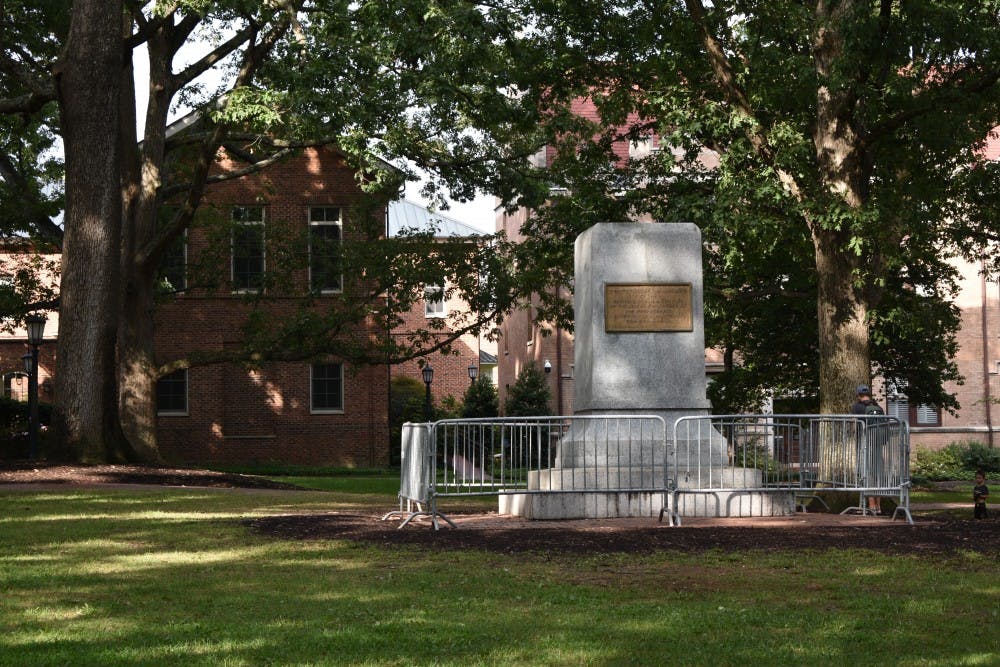The UNC Center for Law and Media Policy sponsored a discussion panel on the role of public art as part of its tenth annual First Amendment Day celebration on Tuesday.
Approximately 40 community members attended the discussion, which was held in Carroll Hall’s Freedom Forum Conference Center and featured students and faculty from multiple departments. Panelists debated the role of public memorials in contextualizing history and framing constituents’ interactions with current political events, and a great majority of the conversation centered around Silent Sam.
Erika Wilson, a professor of public policy in the UNC School of Law, said statues like Silent Sam serve to explain community values in terms of who its heroes are and what its history is. Silent Sam was sponsored by the United Daughters of the Confederacy and erected during the peak of the Jim Crow era. Wilson said the statue sent a strong message about African Americans being devalued in this society of the past.
Amanda Reid, a professor in the UNC School of Media and Journalism, extended this claim into modern day.
“By allowing memorials to remain on public property, there is some endorsement and affirmation,” she said.
Reid said monuments like Silent Sam are founded in the historical context of their past and continue to send that particular message.
Cody Johnson, a political science and public relations major and member of UNC College Republicans, said he believes a monuments’ meanings can change over time. To him, Silent Sam may have potentially represented these negative values at the time of its installation, but the statue now has a different meaning.
"I think it's more so a memorial, like focusing more so on the lives lost," Johnson said.
The panel discussed how the statue and other works of public art force communities to interact with them.



